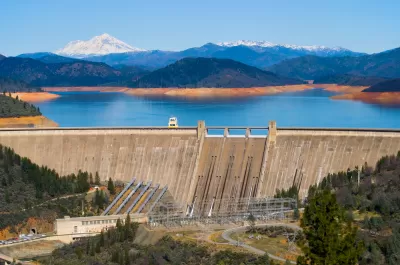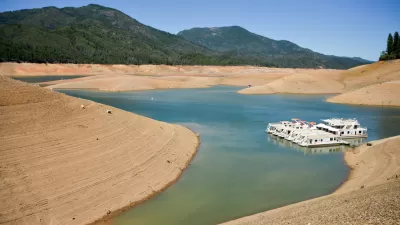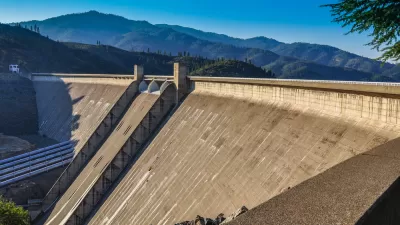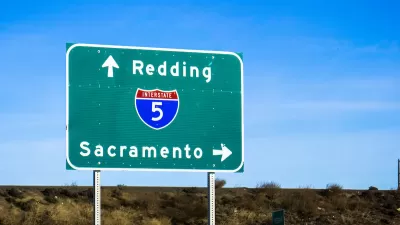A project to raise the height of the Shasta Dam, dead in the water before the Trump administration, is moving forward now that a former lobbyist for the project is the secretary of the U.S. Department of the Interior.

A controversial project to raise the height of the Shasta Dam on the Sacramento River in Northern California has been a favorite of Westlands Water District for years, but scientists at the U.S. Department of the Interior resisted the idea due to expected environmental impacts on sensitive habitat for endangered and threatened species.
David Bernhardt, the secretary for the U.S. Department of the Interior, is a former lobbyist for the Westlands Water District, and now the Shasta Dam project's prospects are improving. According to an article by Coral Davenport, "the project is going forward now, in a big win for a powerful consortium of California farmers that stands to profit substantially by gaining access to more irrigation water from a higher dam and has been trying to get the project approved for more than a decade."
According to Davenport, the Shasta Dam isn't the first example of the Interior Department moving forward on a project to the benefit of Bernhardt's former employer. "Mr. Bernhardt also promoted the weakening of an endangered-species regulation that would get Westlands more water, a move that has put him under scrutiny from his department’s inspector general," according to Davenport.
The Shasta Dam provides the main ammunition for this narrative of implied conflict of interest. "Under Mr. Bernhardt’s leadership, the Interior Department has disregarded its own scientific and legal analysis showing that raising the Shasta not only would be environmentally damaging and cost-prohibitive, but it would also be illegal under California law," reports Davenport.
Meanwhile the Fish and Wildlife Service, which works under the umbrella of the Interior Department, is moving forward with a new environmental review for the project, which is already being questioned for neglecting to analyze the effects on salmon habitat downstream of the dam.
FULL STORY: The Interior Secretary Wants to Enlarge a Dam. An Old Lobbying Client Would Benefit.

Alabama: Trump Terminates Settlements for Black Communities Harmed By Raw Sewage
Trump deemed the landmark civil rights agreement “illegal DEI and environmental justice policy.”

Study: Maui’s Plan to Convert Vacation Rentals to Long-Term Housing Could Cause Nearly $1 Billion Economic Loss
The plan would reduce visitor accommodation by 25% resulting in 1,900 jobs lost.

Why Should We Subsidize Public Transportation?
Many public transit agencies face financial stress due to rising costs, declining fare revenue, and declining subsidies. Transit advocates must provide a strong business case for increasing public transit funding.

Paris Bike Boom Leads to Steep Drop in Air Pollution
The French city’s air quality has improved dramatically in the past 20 years, coinciding with a growth in cycling.

Why Housing Costs More to Build in California Than in Texas
Hard costs like labor and materials combined with ‘soft’ costs such as permitting make building in the San Francisco Bay Area almost three times as costly as in Texas cities.

San Diego County Sees a Rise in Urban Coyotes
San Diego County experiences a rise in urban coyotes, as sightings become prevalent throughout its urban neighbourhoods and surrounding areas.
Urban Design for Planners 1: Software Tools
This six-course series explores essential urban design concepts using open source software and equips planners with the tools they need to participate fully in the urban design process.
Planning for Universal Design
Learn the tools for implementing Universal Design in planning regulations.
Smith Gee Studio
Alamo Area Metropolitan Planning Organization
City of Santa Clarita
Institute for Housing and Urban Development Studies (IHS)
City of Grandview
Harvard GSD Executive Education
Toledo-Lucas County Plan Commissions
Salt Lake City
NYU Wagner Graduate School of Public Service





























